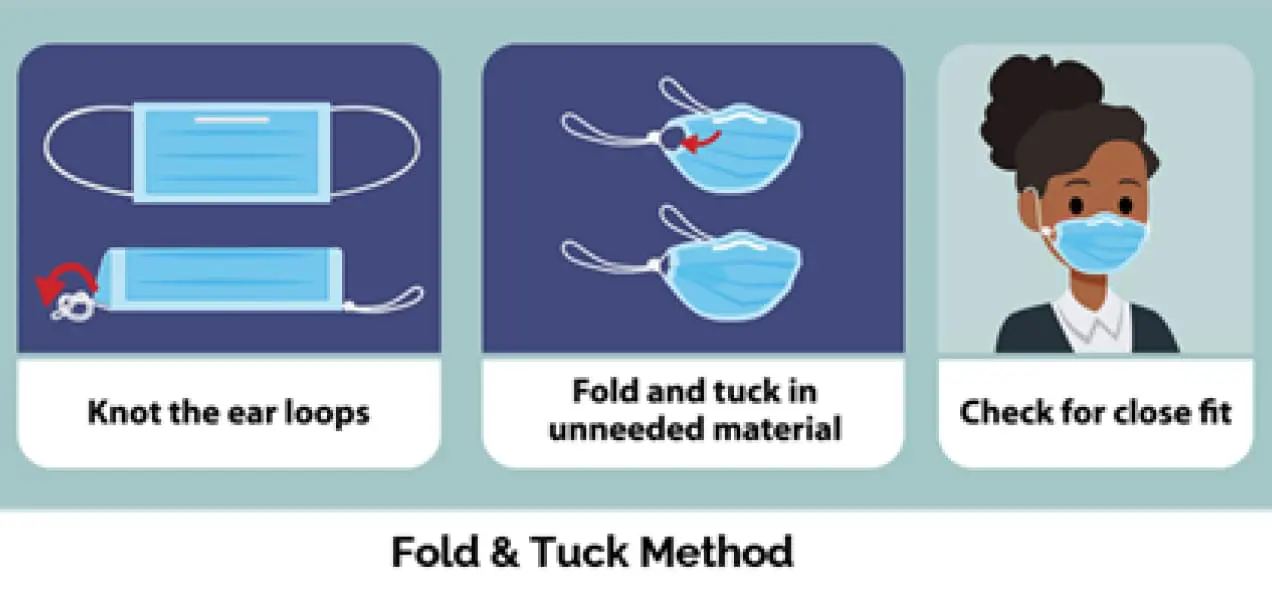




Quick Links:





Respiratory viruses can spread between people interacting in close proximity, for example, by speaking, coughing or sneezing - even if people are not exhibiting symptoms.
Research studies have shown that face coverings protect by preventing the release of respiratory droplets into the environment and slowing the spread of respiratory viruses infections. KAUST may require the use of face coverings to protect everyone and prevent the spread of respiratory viruses in the community in certain situations outlined below.
Regardless of an individual's reason for wearing a face covering, It is important that we lead with empathy, respect each other and enable personal choice.
While face coverings are no longer required, the use of a face covering is an informed decision and individual choice. Face covering use is a social responsibility based on the risk to colleagues and family. Consider situations or conditions such as:
A “face covering” is any well-secured fabric, cloth or paper face covering covering one’s nose and mouth. Face coverings can be well-designed medical face coverings or cloth face coverings provided they cover the nose and mouth. Face coverings will prevent the release of respiratory droplets/particles into the environment (source control) and to some extent filter respiratory droplets/particles that you can potentially inhale (personal protection).
Our current recommendation for the KAUST general public when making an individual decision on mask type, is to always select a face covering that fits well and that you will wear consistently. Other considerations should include the protective level of the face covering/respirator, vaccination status, group size, proximity and other controls in place.
Face coverings provide an excellent level of protection, particularly when worn properly and along with other Keeping KAUST Safe preventative measures.
The most important factor in achieving a high level of protection is fit. Individuals should select a face covering/respirator that achieves the best level of fit and protection for their needs.

N95 respirators do present a higher level of protection for most users as they have a denser, multi-layer network of fibers. The thicker filter can be difficult and uncomfortable for some users to breathe through over the course of a day, so consider using the N95 for high risk areas, such as crowds or where the physical distancing is limited and/or ventilation is poor.
The use of N95 alternatives should be closely evaluated as quality and counterfeiting concerns may result in a level of protection that is greatly degraded or inadequate. N95 respirators with exhalation valves shall not be used to protect against respiratory viruses.
Medical face coverings provide a high level of protection against respiratory viruses and its variants for the majority of KAUST environments, particularly when worn properly and applied along with the Keeping KAUST Safe preventative measures. An additional level of protection can be realized by double masking (medical face covering with a 3-layer cloth/fabric face coverings). In research laboratories, wear disposable face coverings (i.e. medical face coverings) and change your face covering regularly.


Cloth masks can offer a level of protection where the construction and the individual fit is suitable. The main concern with cloth face coverings is the fabric pore size and facial gaps from poor fit. Where used, reusable cloth masks must be 3-layers and should be well cared for to achieve appropriate protection. Cloth/fabric (reusable) face coverings may not be worn in the laboratory as there is a potential for contamination.
A common problem with some masks is that there can sometimes be gaps between the mask and the mask wearer’s face. When there are gaps, air with respiratory droplets containing the virus can leak in and out around the edges of the mask (on the top or the sides). To help prevent air leakage, masks should fit snugly against the sides of the face and not have gaps. Watch the video here:


Knotting and Tucking: This technique can be used to improve the fit of a medical procedure mask. Knot the ear loops of the mask where they join the edge of the mask, then fold and tuck the unneeded material under the edges. For instructions, see the following. For disposable face coverings, fold & tuck the unneeded material under the edges. Watch the video here:
Knotting and Tucking: This technique can be used to improve the fit of a medical procedure mask. Knot the ear loops of the mask where they join the edge of the mask, then fold and tuck the unneeded material under the edges. For instructions, see the following. For disposable face coverings, fold & tuck the unneeded material under the edges. Watch the video here:

Protecting yourself and others from respiratory droplets and particles is critical in our fight against the spread of infections. However, wearing a face covering alone is not enough. To ensure its effectiveness and prevent contamination, it is imperative to use and handle face coverings properly.
A proper fit over your nose and mouth to prevent leaks
Multiple layers of tightly woven, breathable fabric
Nose wire (if available)
Dispose of one-time face coverings safely in a waste bin
Wash and reuse of face coverings on daily basis
Appendix A provides information on face covering usage
